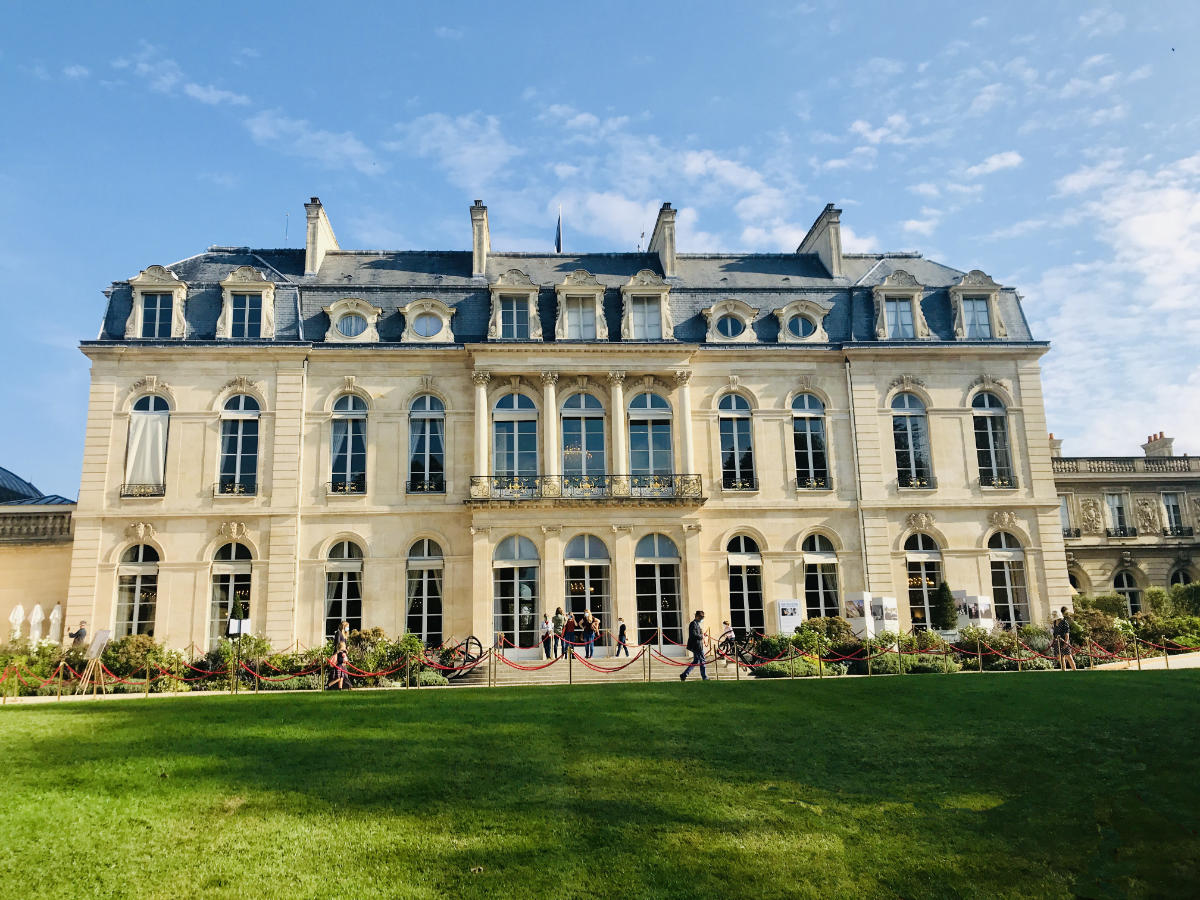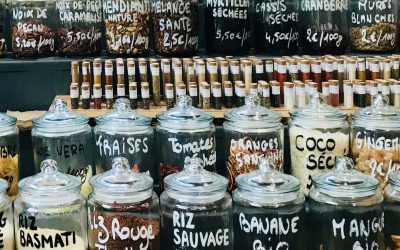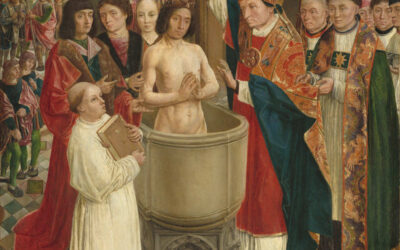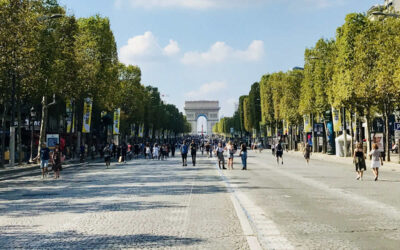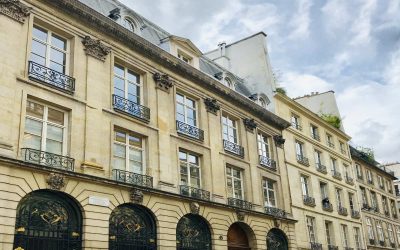It isn’t easy to visit the Palais de l’Elysée. The official residence of the President of France in the 8th arrondissement of Paris is usually under tight security. You won’t find it on any list of things to do in Paris, simply because it is only open to tourists once a year.
And yet, I have been to the Elysée Palace 3 times(!). I wasn’t planning on going 3 times, I have no secret access or anything, I just happen to have been to this highly symbolic national building under 3 different Presidents.
The 1st time I was a newly minted expat, fresh off the boat as it were. I went, waited in line for 3 hours or so on the day of Journée du Patrimoine, the only day of the year that it is open. I made friends while waiting, looked around, and had a great visit.
The 2nd time, I went with my French OH who had never been, which seemed like a shame since he is French. We waited 6+ hours in line, enjoyed ourselves, but swore there was no need to ever do this again.
The 3rd time, however, a very smart person invented timed-entry tickets. No more waiting in line, a few clicks of the mouse and I had 4 tickets. Time to make some memories with our kids!
Now, I mention having been there 3 times for a reason: the Presidents of France seem to have made some very interesting decor choices. Nicolas Sarkozy (2007-12) and François Hollande (2012-17) stuck to a classical Versailles-style choices, while Emmanuel Macron (2017-present) seems to be a fan of modern office furniture.
And there is simply no commenting on President George Pompidou’s (1969-74) decor, which no President since has dared to take down. But let’s judge it all for ourselves, shall we?
The Gardens at the Elysée
During the Journée du Patrimoine, every visitor passes security and enters through the back gardens. There is a giant fountain at the entrance, with the Elysée in the background. (François Holland used this view in one of his Presidential photos.)
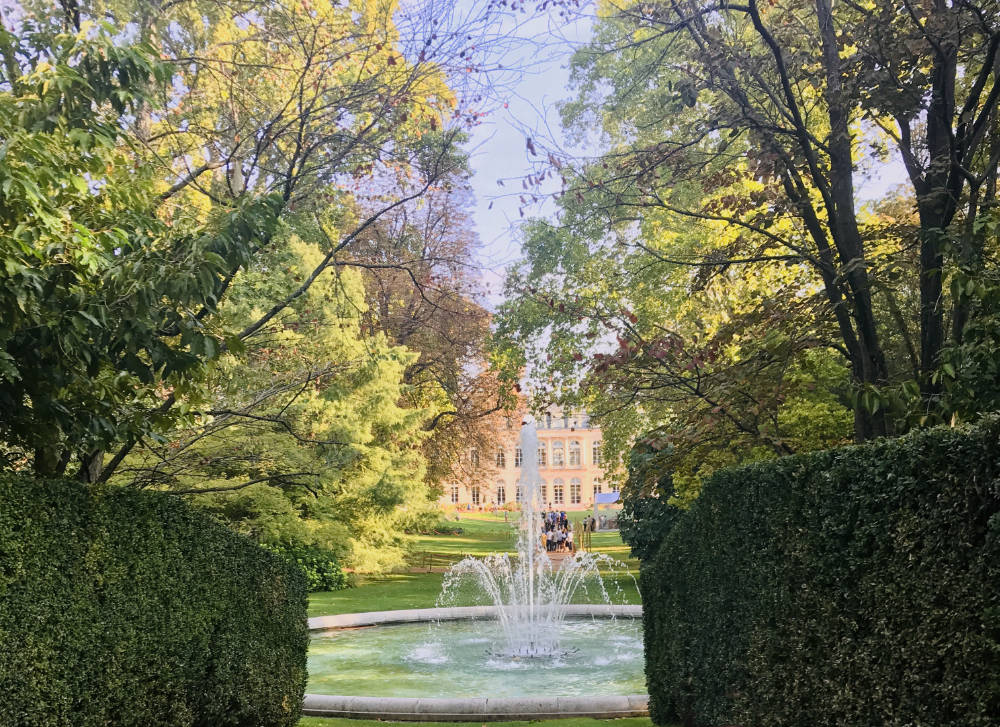
☞ READ MORE: “Vive La France” and other French Presidential Vocabulary
There is a large grassy area where you have many opportunities to take your own pictures as you walk up to the Palace. (This is important because as you will see later, the actual front of the Palace where foreign dignitaries enter in the Cour d’honneur is quite small and crowded.)
Later when you get up to the Bureau of the President, you will see that his office faces this view, not the front.
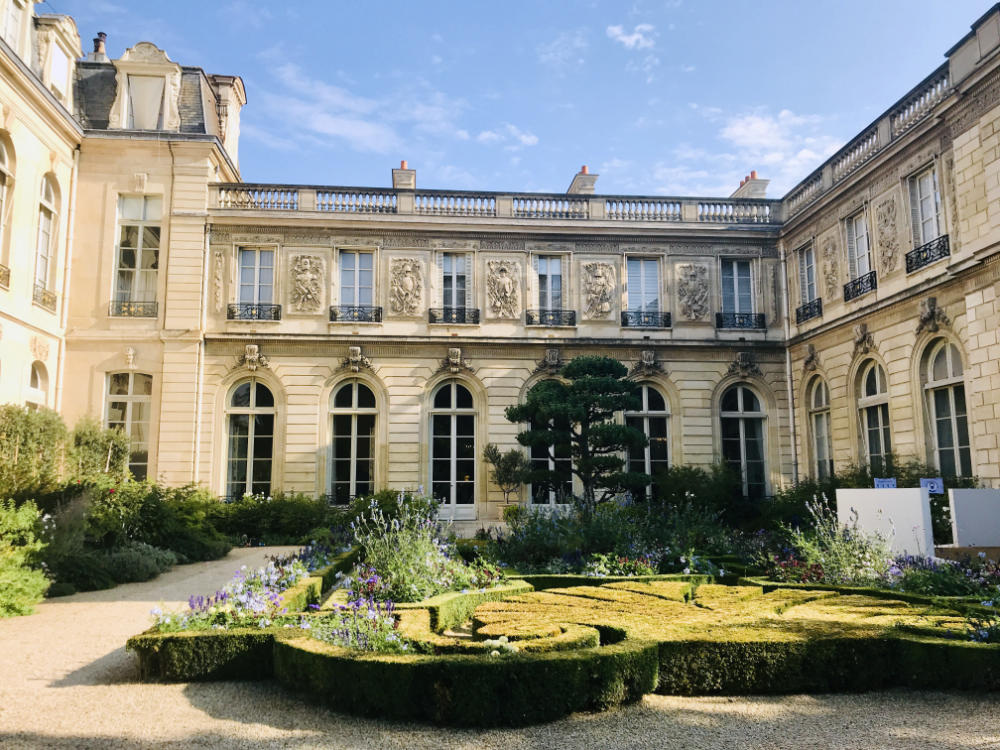
The Elysée was initially purchased by King Louis XV as a residence for his mistress, the Madame de Pompadour. At the time it was considered a “country house” west of Paris, which is why the property is so large. After her death, it reverted back to the crown, and then changed hands several times.
The house was confiscated during the French Revolution in 1789, but luckily for us, not destroyed. After Napoleon Bonaparte came to power, his sister Caroline Bonaparte and her husband Joachim Murat, purchased the property.
It became the official residence of the President of France during the Second Republique under Napoleon III in 1848 (the nephew of Napoleon Bonaparte).
Napoleon’s desk
The visit inside the residence starts in the Salon d’argent (the Silver room), which was designed by Caroline Bonaparte.
Intricate silver moldings are all over the walls and furniture, a stylistic difference compared to the usual choice in other buildings like the Assemblée Nationale, Chantilly, Fontainebleau, etc which stick to gold.
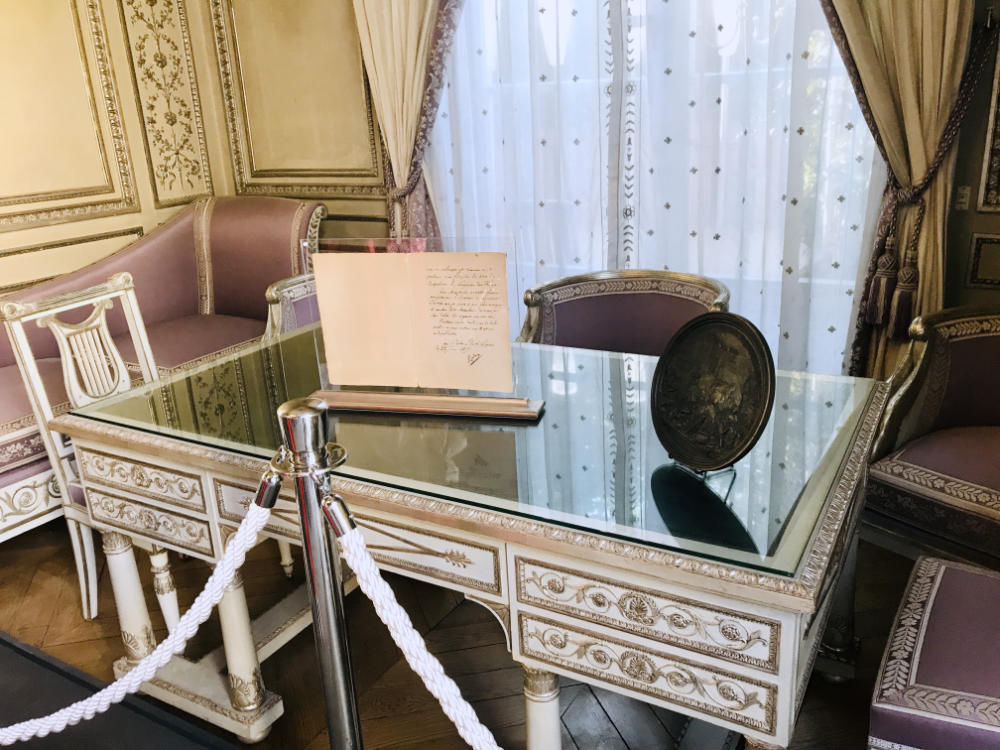
Right in the entrance is the desk that Napoleon Bonaparte used to sign his abdication and surrender to the British in 1815, along with a copy of the letter. (I presume it is a copy, and that they wouldn’t leave the original lying around in the entrance like that!)
George Pompidou’s Decor
Next up, get ready for President George Pompidou’s futuristic vision. Goodbye silver and gold ornate decor, hello nouveau art, version 1970s. George Pompidou gave his name to the famous modern art museum, the Centre Pompidou in the Marais, so you can tell he really enjoyed this type of work.

The table, chairs, and ceiling all have been there since my first visit in 2010, but the artwork seems to be under President Macron.
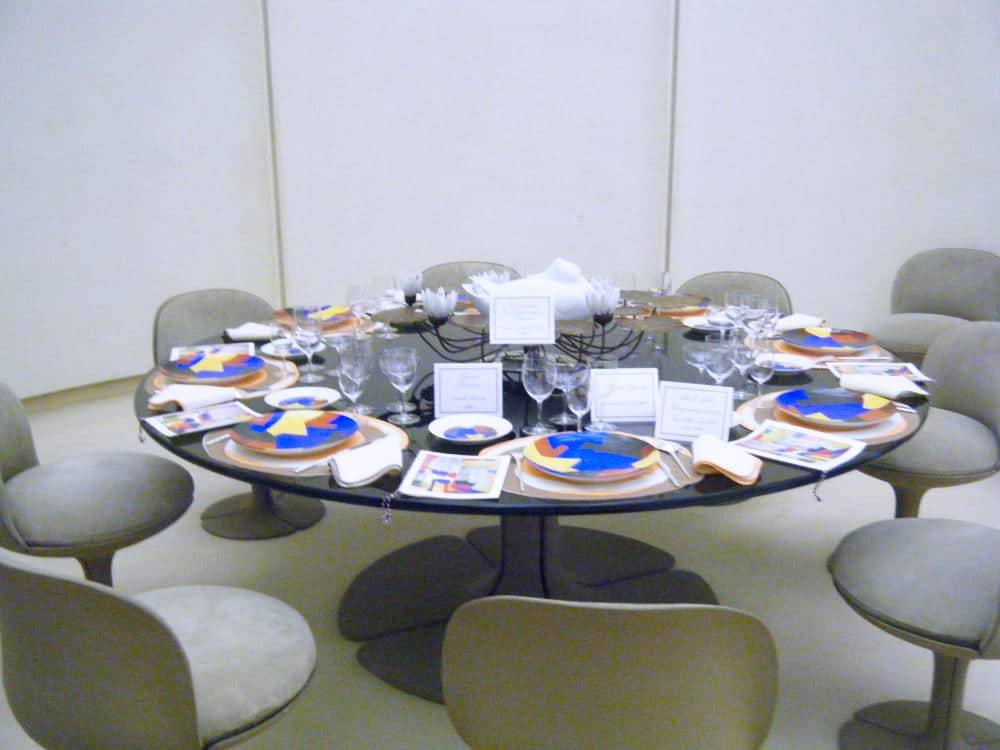
(I say this because there is a lot more of this style art coming up, that was not there during my 1st two visits. Also, it says so on the visit programme.)
I presume these rooms once resembled the highly decorated rooms of Versailles, so I can only imagine the reaction when that interesting ceiling fixture was put in. George Pompidou was President until he died in 1974, but as you can see, no one has dared take his rooms apart 40 years after his departure.
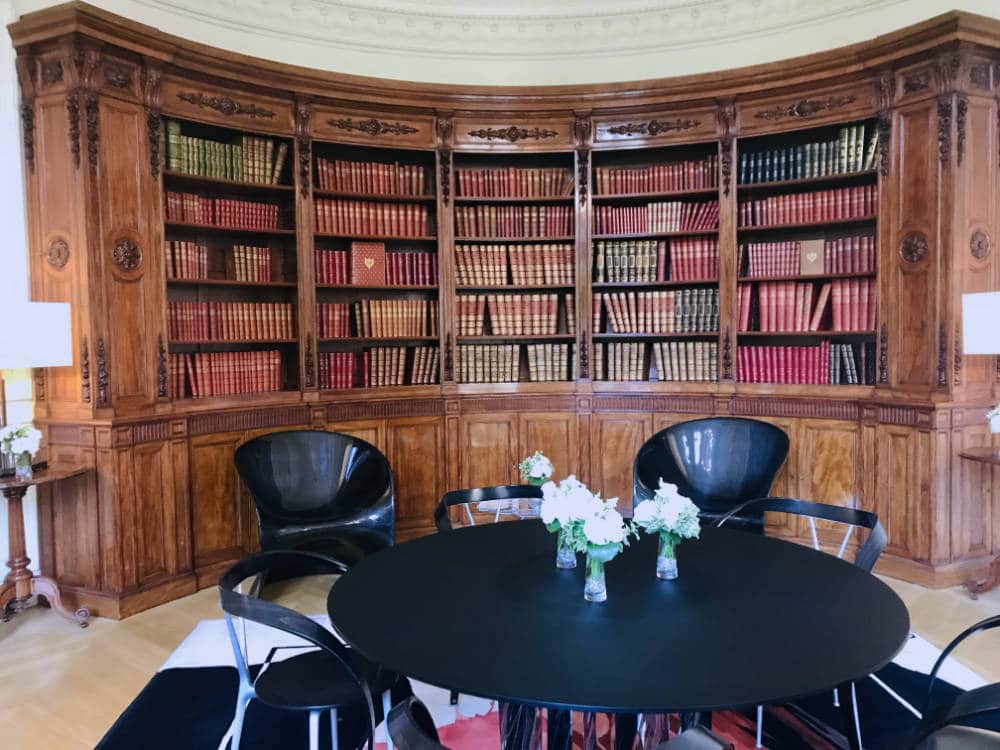
The Library
Returning to a bit of satorial splendor is the next room which is the Libary of Napoleon III (nephew of Napoleon Bonaparte).
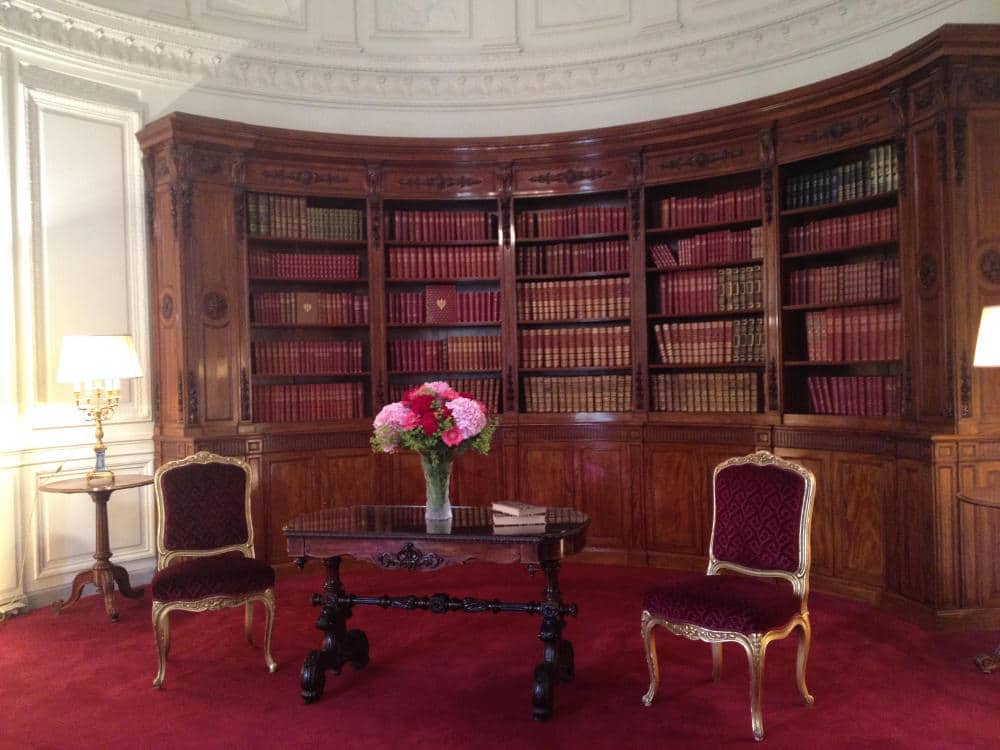
The bookcase has remained intact, although we do see President Macron’s first foray into the world of decor with a black conference table. (This is an office building after all.)
Do take a photo of yourself in front of the bookcase. It has been used as a backdrop for several official Presidential photos, including that of Nicolas Sarkozy.
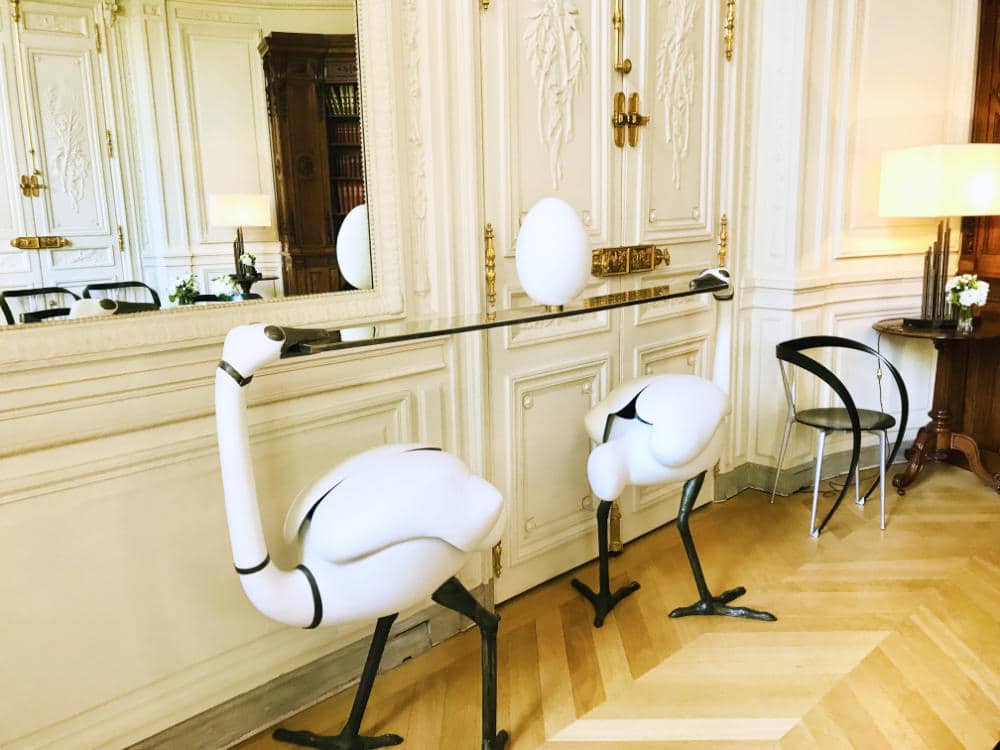
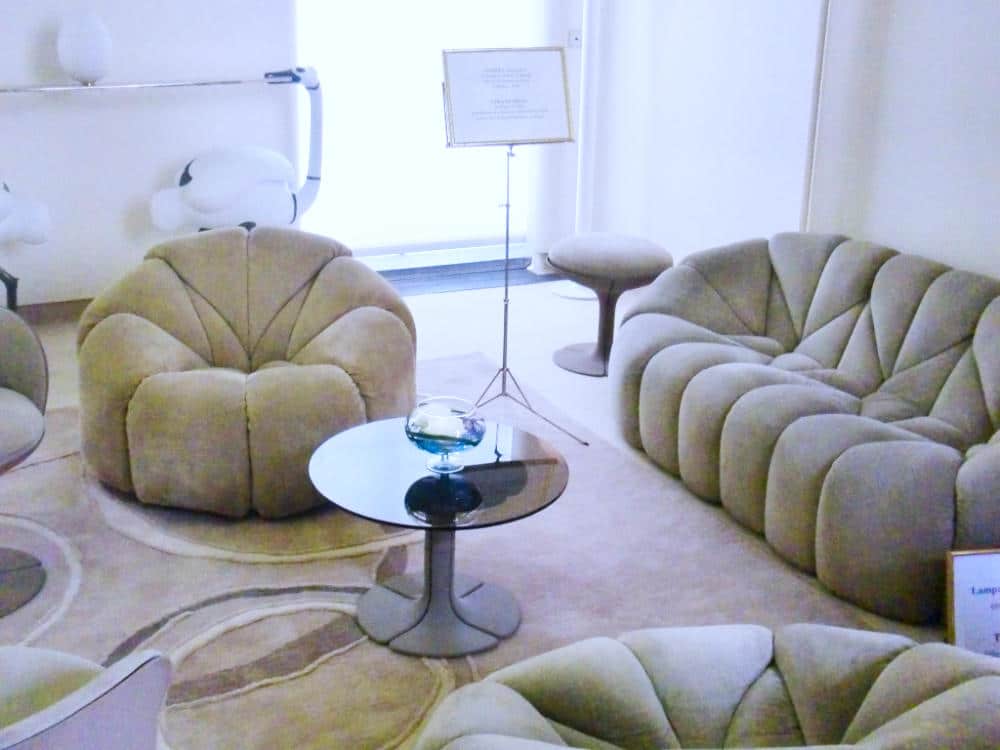
In the corner of the library is this pair of swans (flamingos?). I don’t know who purchased them, but a quick look through past photos shows that there were in one the George Pompidou rooms that have since been dismantled (thankfully along with those couches).
Reception Rooms
Just off the Library is a series of reception rooms. My favorite has to be the Salon de la Cartographie that manages to beautifully blend the modern and the classical. It used to be one of Pompidou’s decorated rooms, before being restored.
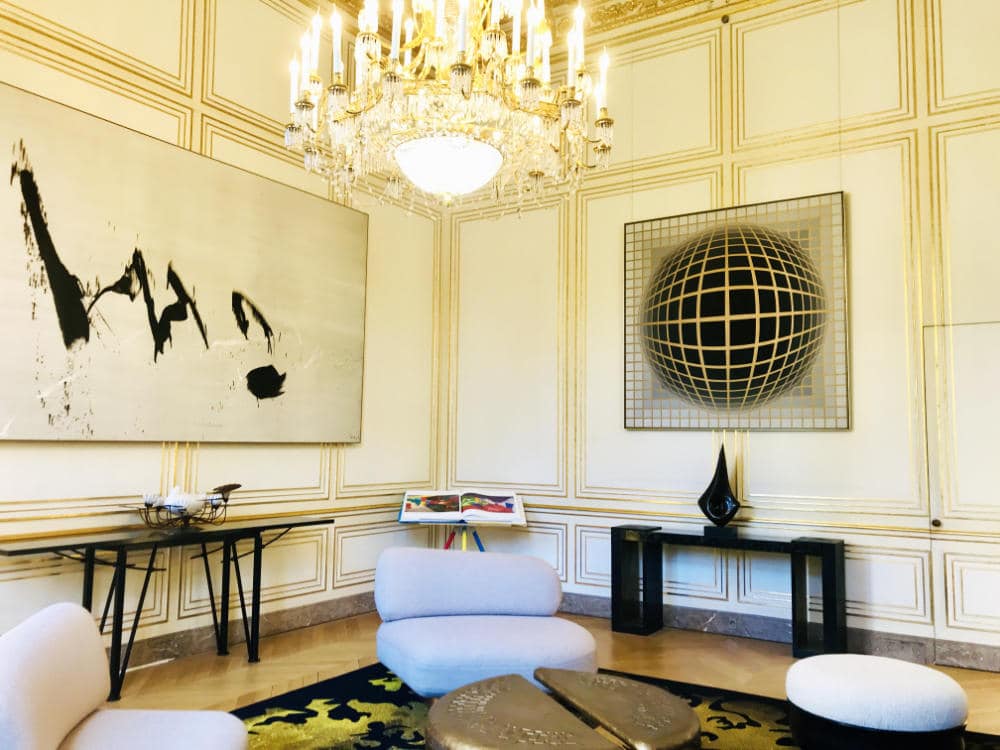
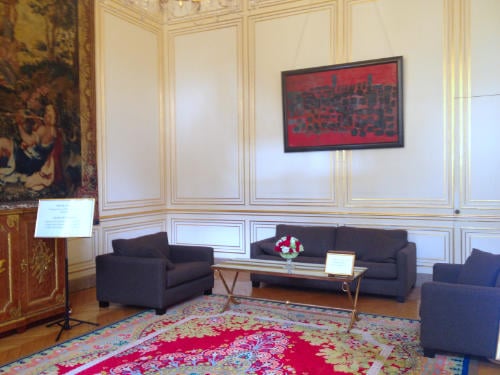
It did go through a phase of blandness before getting to this stage however, here is the room under François Hollande. I think I’ve seen those same couches from IKEA.
(I cannot find a picture of what it looked like under Sarkozy, it was clearly too ugly to photograph. )
A more questionable choice by President Macron is in the Salon Cléopâtre, which features this dubious piece of artwork on the walls. My 3-year-old was very impressed.
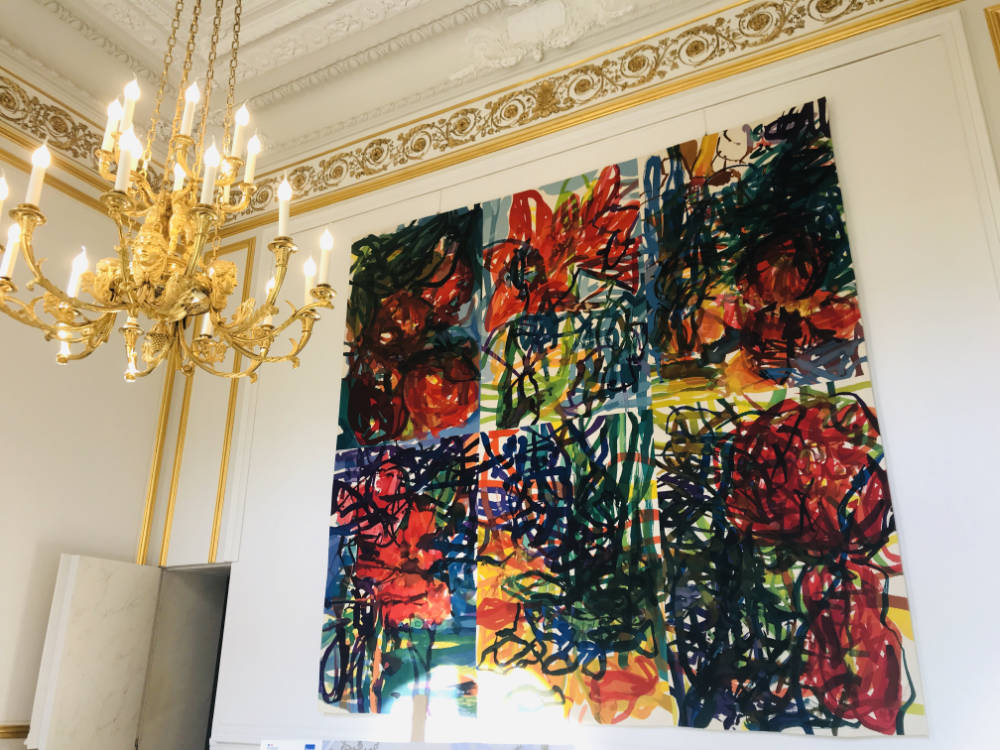
Another interesting contrast is the Salon Pompadour, named after Madame de Pompadour.
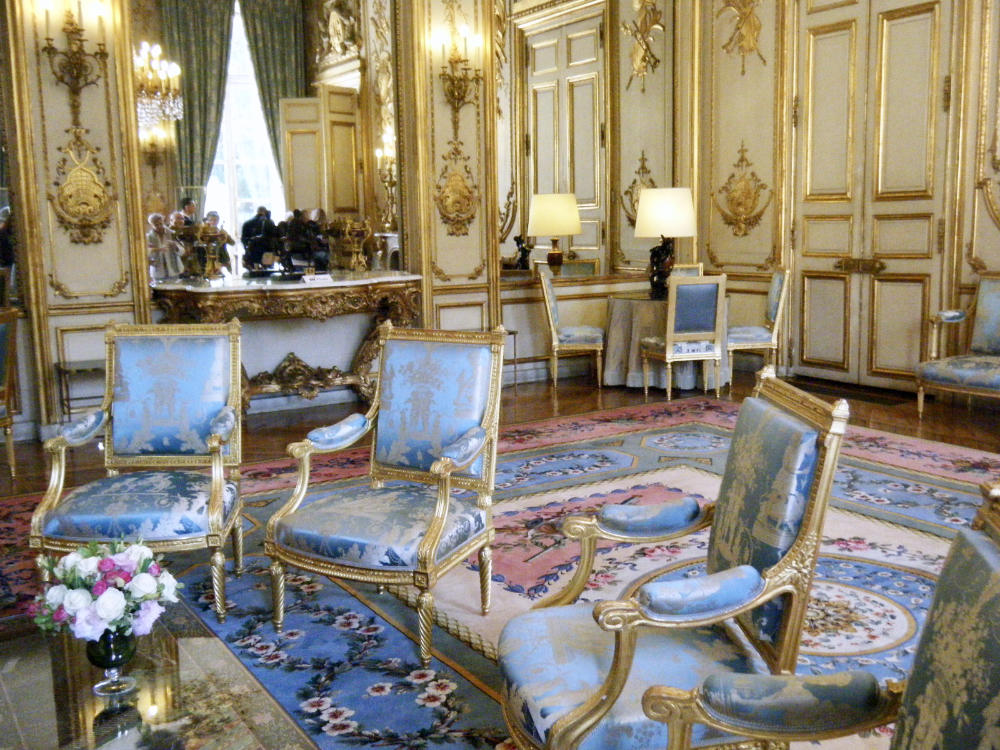
Gone are the uncomfortable ornate chairs and in came the giant sofa to lounge on. If that painting rolls up to unveil a giant TV screen, I shall be ready to move in.
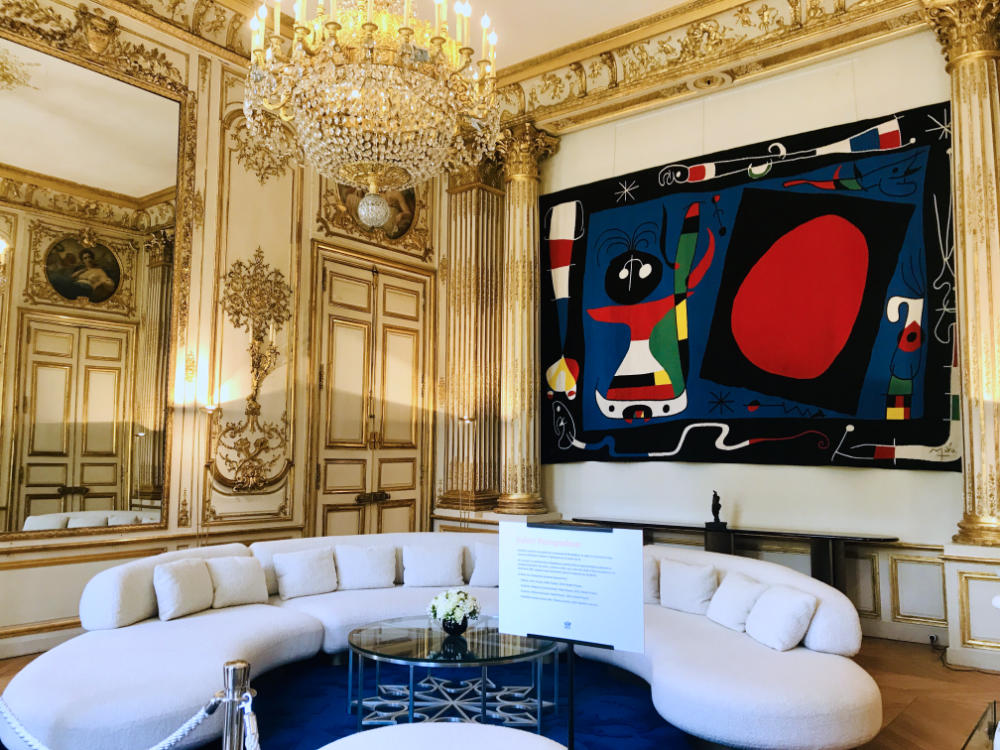
Thankfully no light fixtures seem to have been harmed in this HGTV style makeover.
Office of the First Lady
Located on the ground floor, a couple of steps away from the library is the Salon des Fougères, which used to look like this:
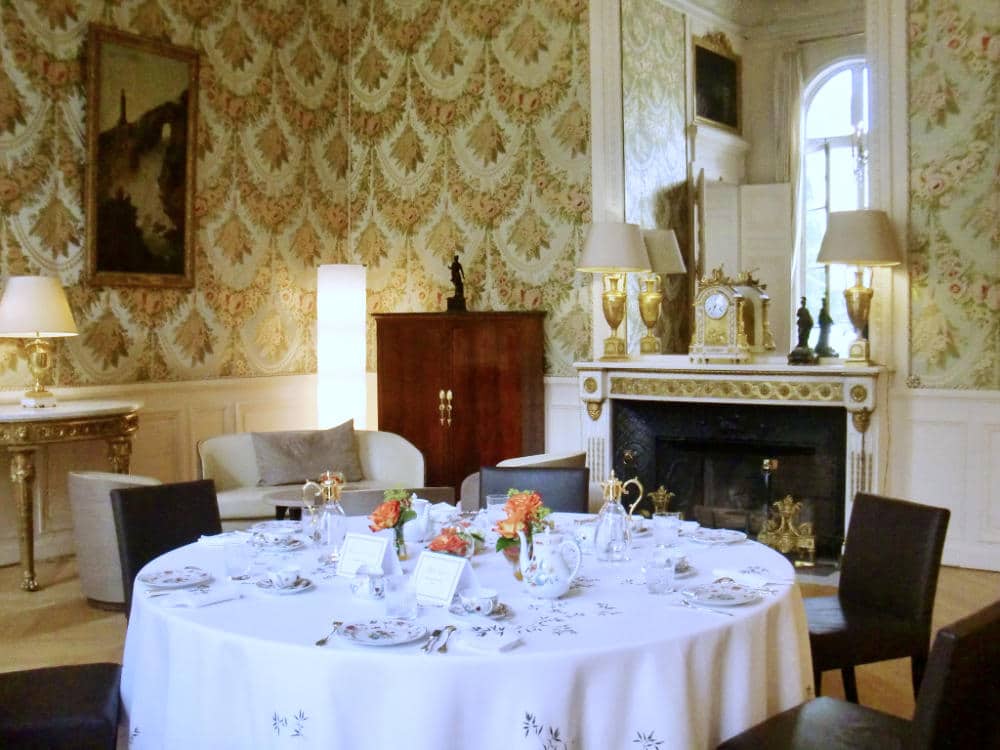
However, when Brigitte Macron saw that there was no office allocated to the First Lady, she decided to turn the room into her office. (Her predecessors, the wives and girlfriends of Sarkozy and Hollande respectively, had turbulent love lives while in office, so apparently didn’t need office space. Yes, there were multiple wives and girlfriends.)
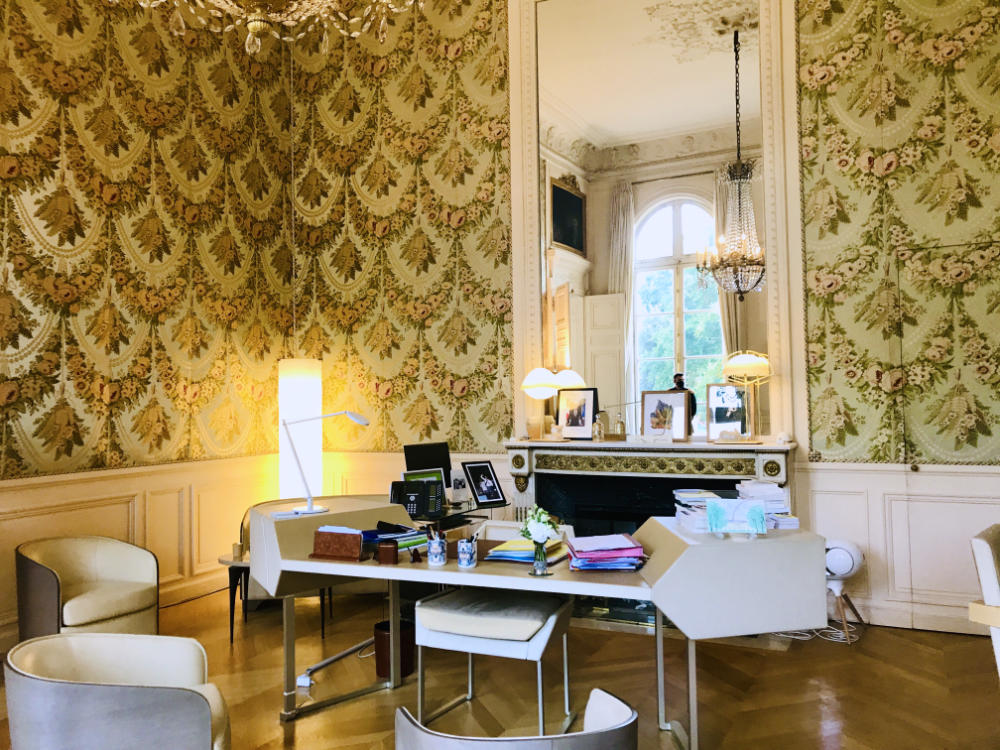
Anywhoo, the desk as you can see is quite modern, but it certainly seems to be making do with what is there. None of these decor choices are irreversible, which is more than we can say for those Pompidou rooms!
Ministers’ Meeting Rooms
When walking through the Elysée, it is important to remember that this is a government office building. Here is one of the meeting rooms under François Hollande. Interestingly, you can see the closest name tag on the table is that of Emmanual Macron, when he was an advisor to President Hollande.
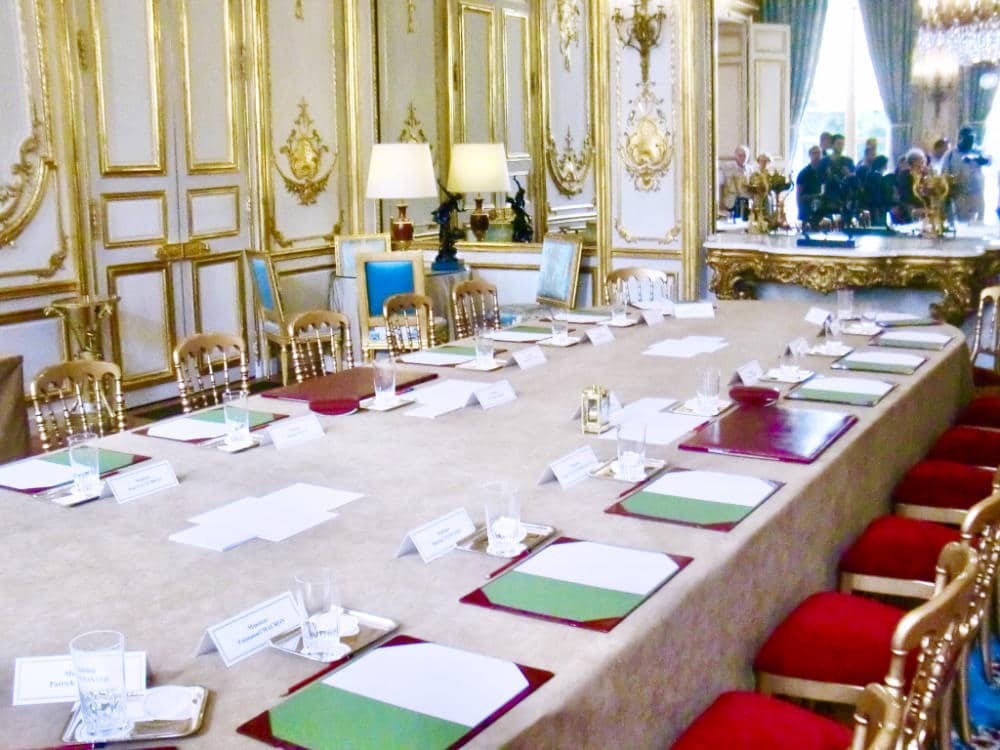
There has been a bit of a makeover here as well, under President Macron. The distracting mirror has been covered up (no one needs to check their hair during a cabinet meeting), a new modern desk brought in, and projector and computer screens brought in.
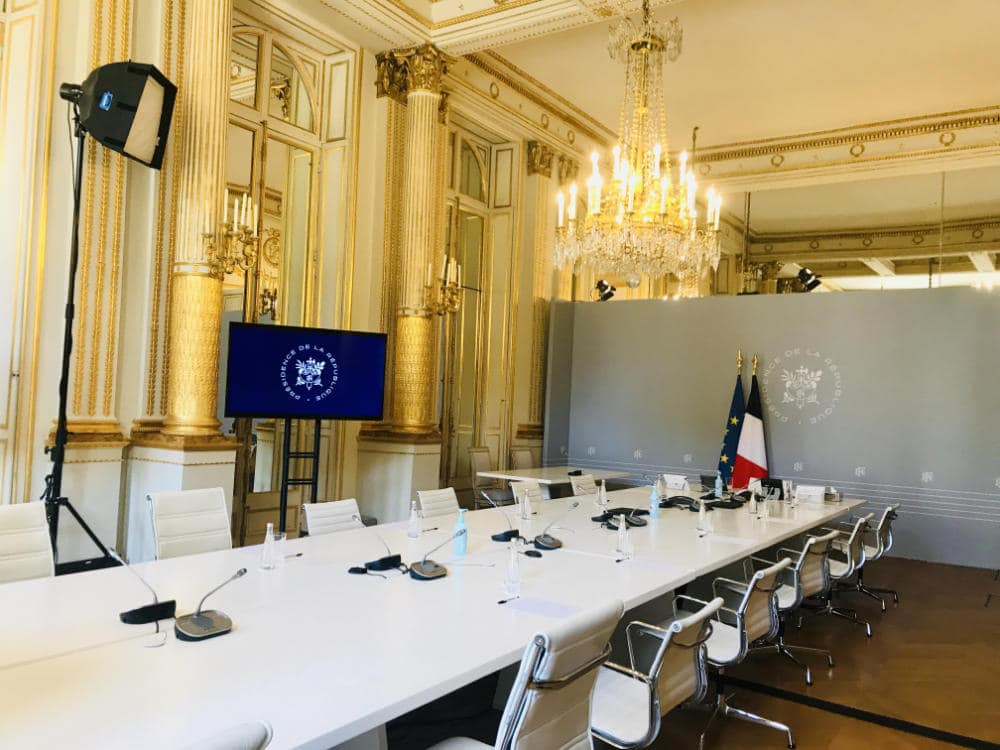
We did find a more traditionally decorated meeting room, the Salon des Ambassadeurs, although the mirror was still covered up.
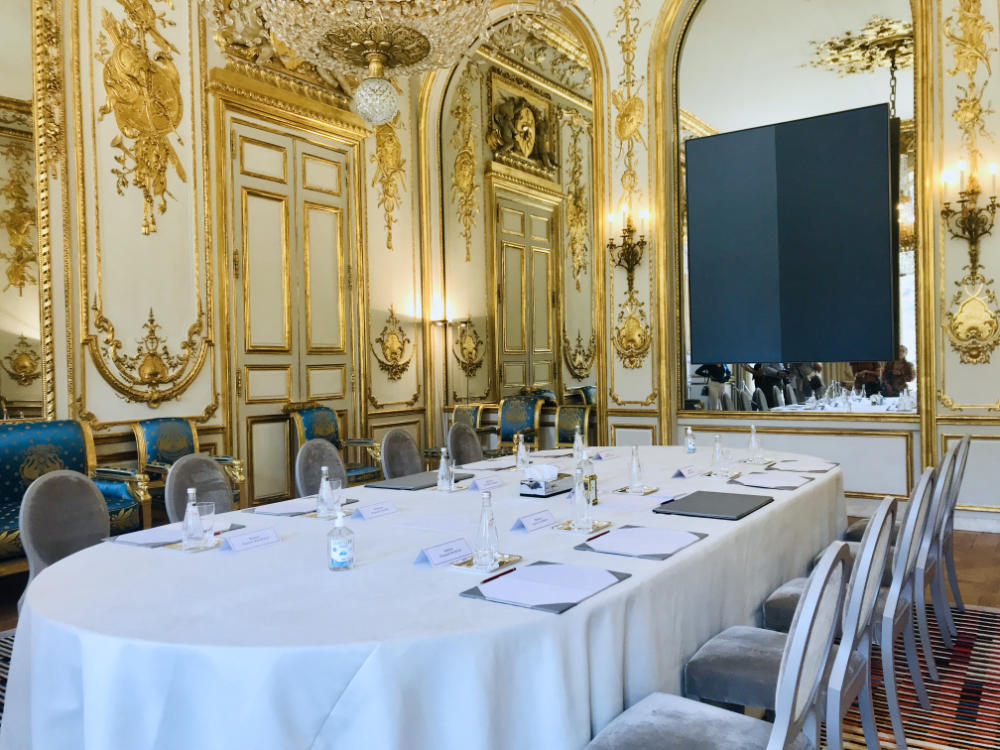
Escalier Murat
Once you finish with the salons and offices, it is time to go up the famous Escalier Murat staircase! Many a President and foreign dignitary has been photographed on these stairs, so do take a photo of yourself climbing it.

The staircase leads to the President’s office and his personal apartment. (There have been no female French Presidents to date, which is why I use the pronouns “he/his”.)
The Office of the President
And finally, as we say in French, “le clous du spectacle” meaning “the star of the show”. The room is called the Salon Doré, meaning Golden Salon. The desk is the desk used by the 1st President of the 5th République, Charles de Gaulle, after World War II.
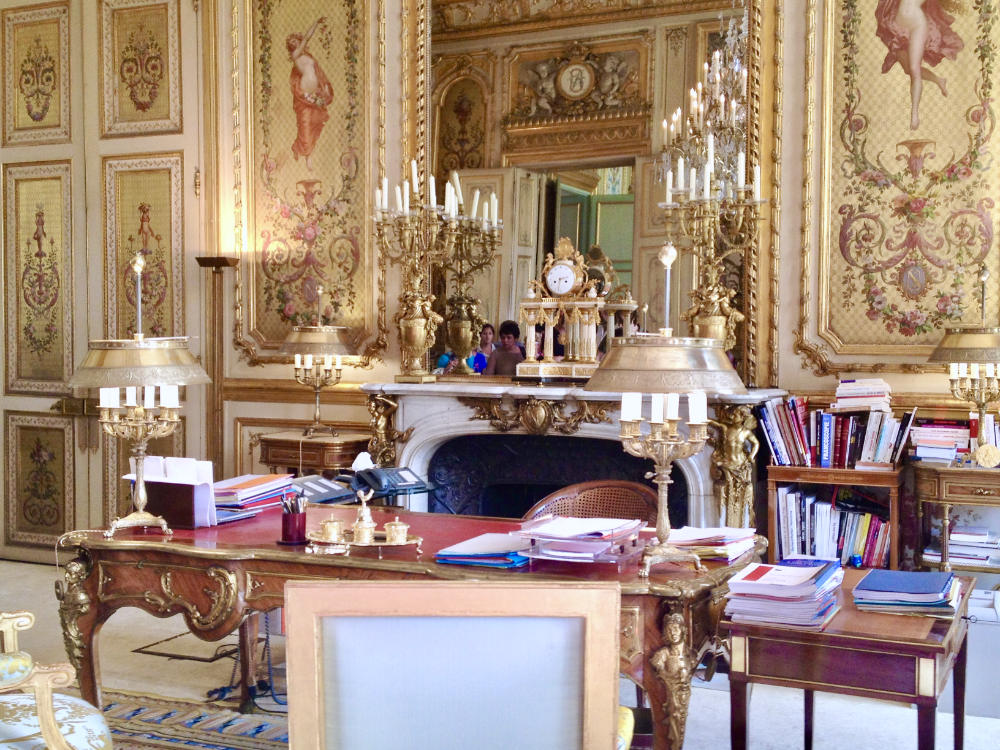
It was used by several Presidents including Sarkozy and Hollande, although you must admit it doesn’t seem to be the most practical.
Above is François’s Hollande desk, which seems to be bursting with books and papers. President Sarkozy’s desk was the same, except he had put his papers away. (This is not a comment on his politics, Sarkozy just perhaps had more time to put stuff away!)
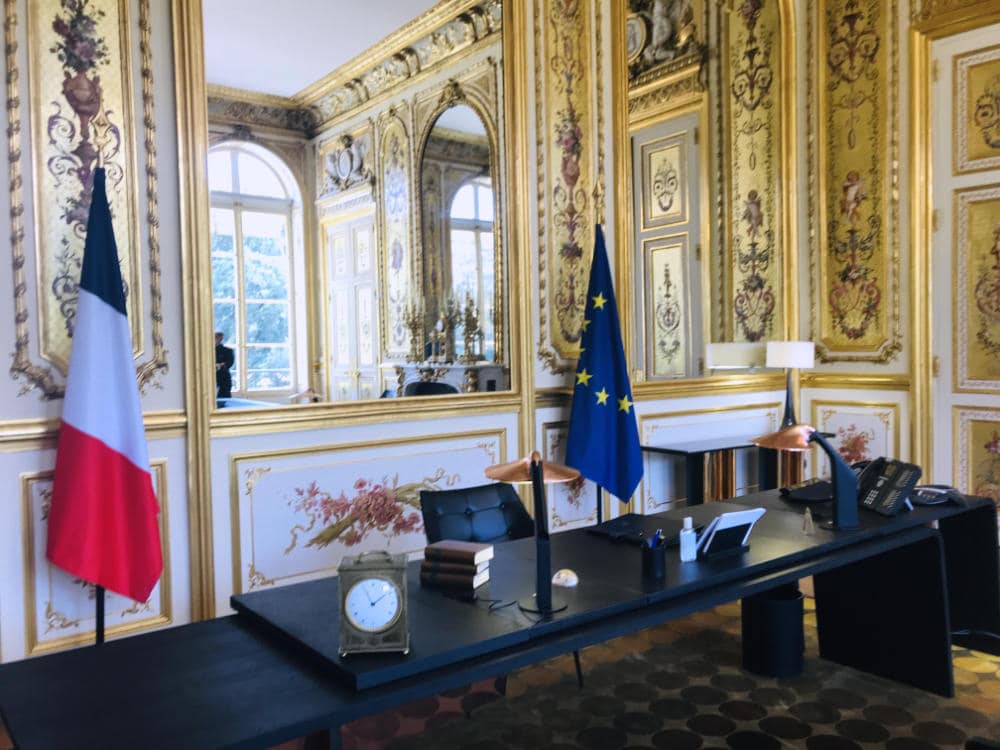
President Macron would agree that it seems a bit impractical because he has replaced it with this large black desk that looks like something you can find at Office Depot. More practical for spreading papers across, I suppose.
François Hollande and Nicolas Sarkozy had their desks with their back to the fireplace, in the center of the room, versus Emmanual Macron’s desk is against a far wall across from the window looking out into the park. Why the change? For more furniture of course:
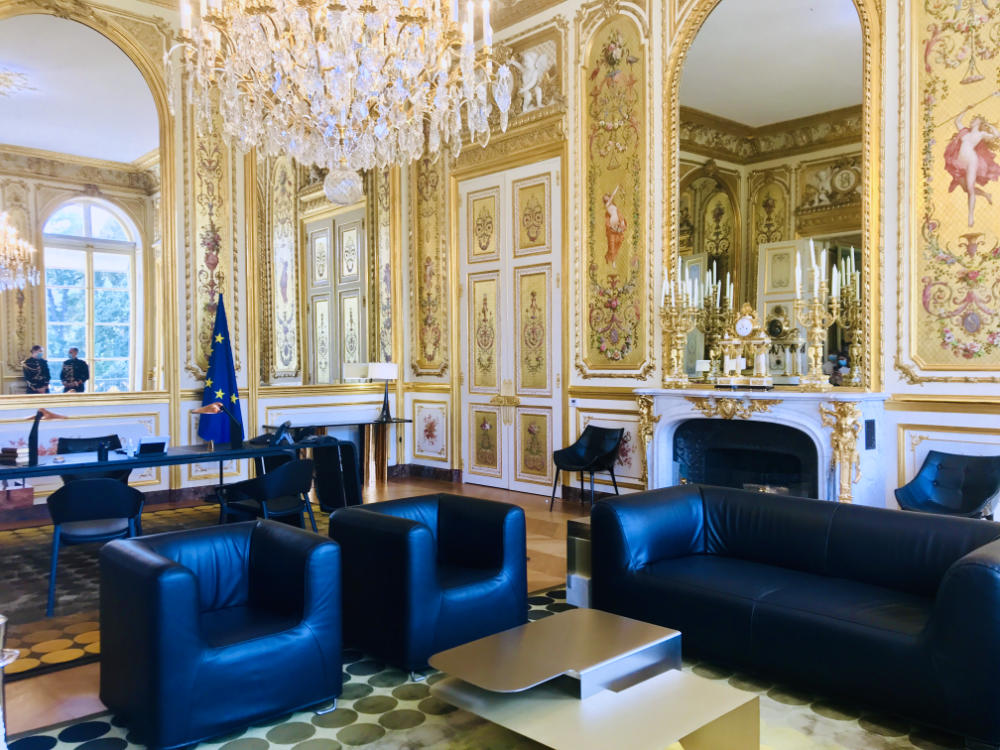
Here we have the leather couches and the coffee table newly installed, which I also presume came from Office Depot. I must say they look super comfortable, even if they seem a bit jarring against that crystal chandelier.
Jardin d’Hiver
Back downstairs is a large open space with a glass roof that is called the Jardin d’Hiver (Winter garden). During the Journeé du Patrimoine there are usually various tables set up featuring different areas of the Elysée’s savoir-faire. Kitchenware, the upholstery team, dishware, there is a bit of everything.
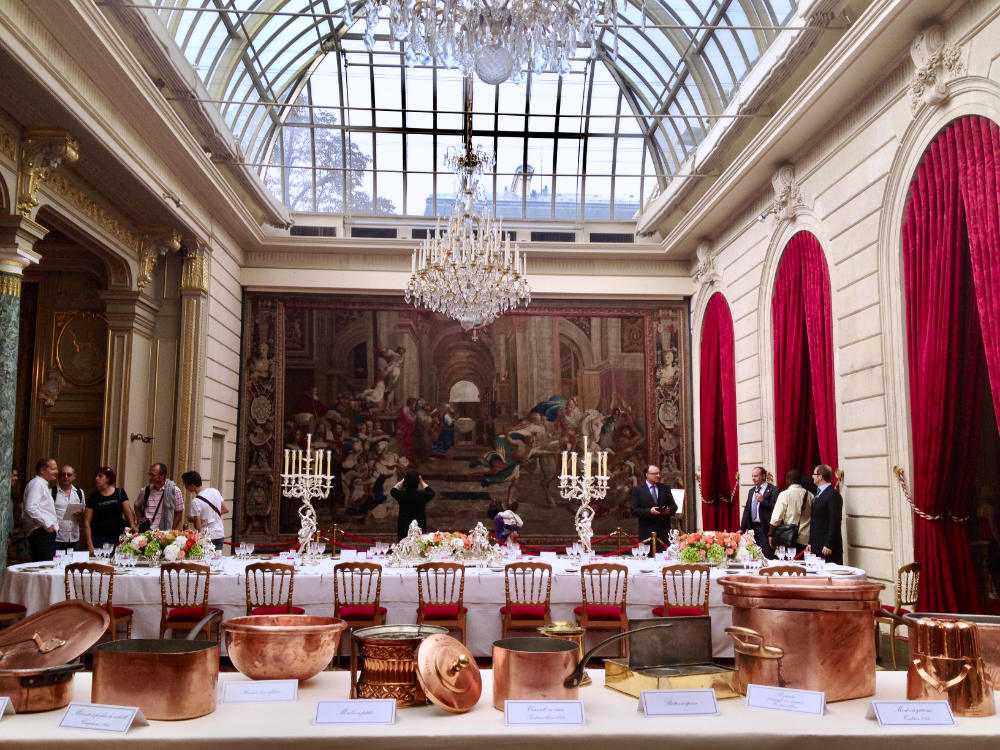
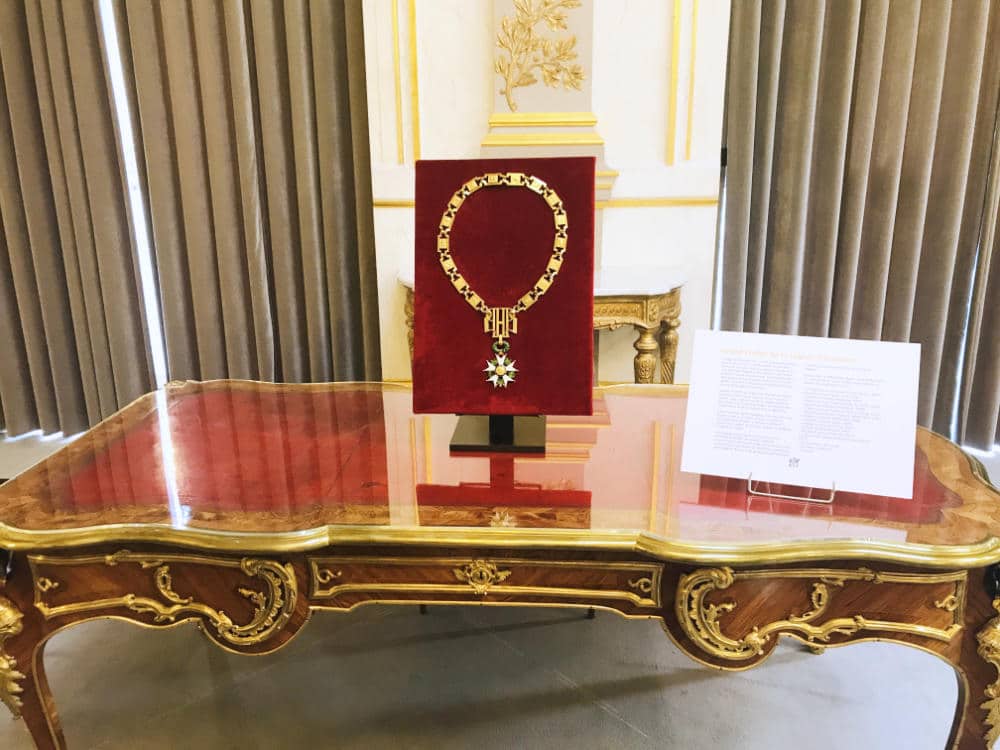
There is also usually a display of the Legion d’Honneur and gifts received from various foreign leaders.
(Under President Macron, we also run into Charles de Gaulle’s missing desk delegated to a corridor near the Jardin d’hiver!)
Salle des Fêtes
One of the most beautiful rooms in the Elysée Palace has to be the Salle des Fêtes. Just off the Jardin d’Hiver, this is where the state dinners are held. And when it is not being used to hosting foreign leaders, major press conferences of the President are held from this large ballroom.
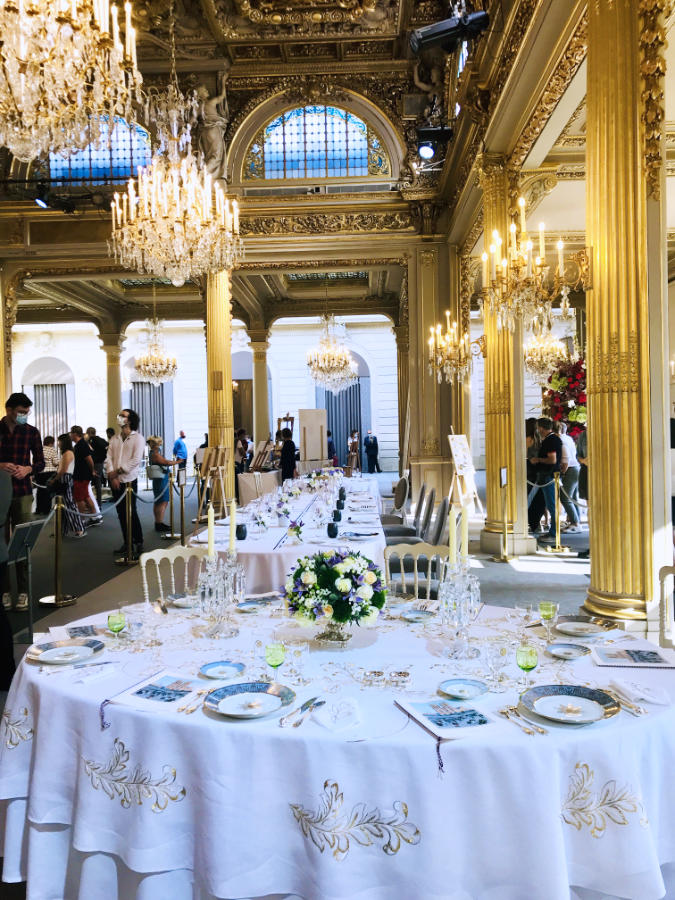
During our most recent visit, there was an army orchestral group playing in one corner, and this gorgeous grand piano in another corner. No word on which French President like to tickle the ivories.
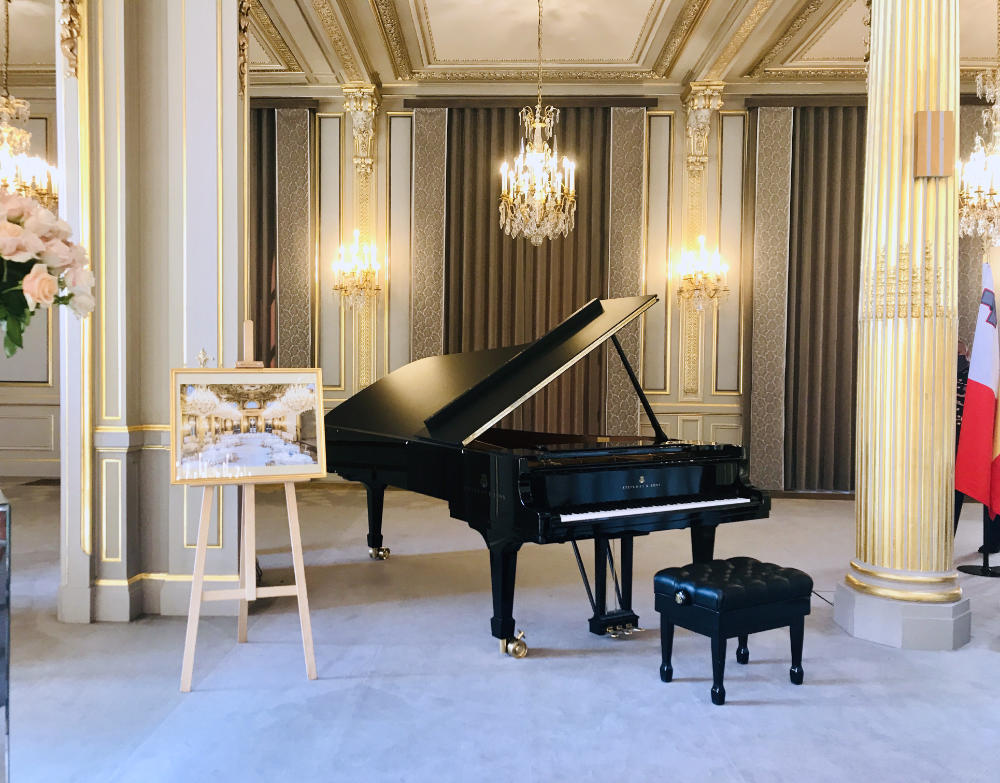
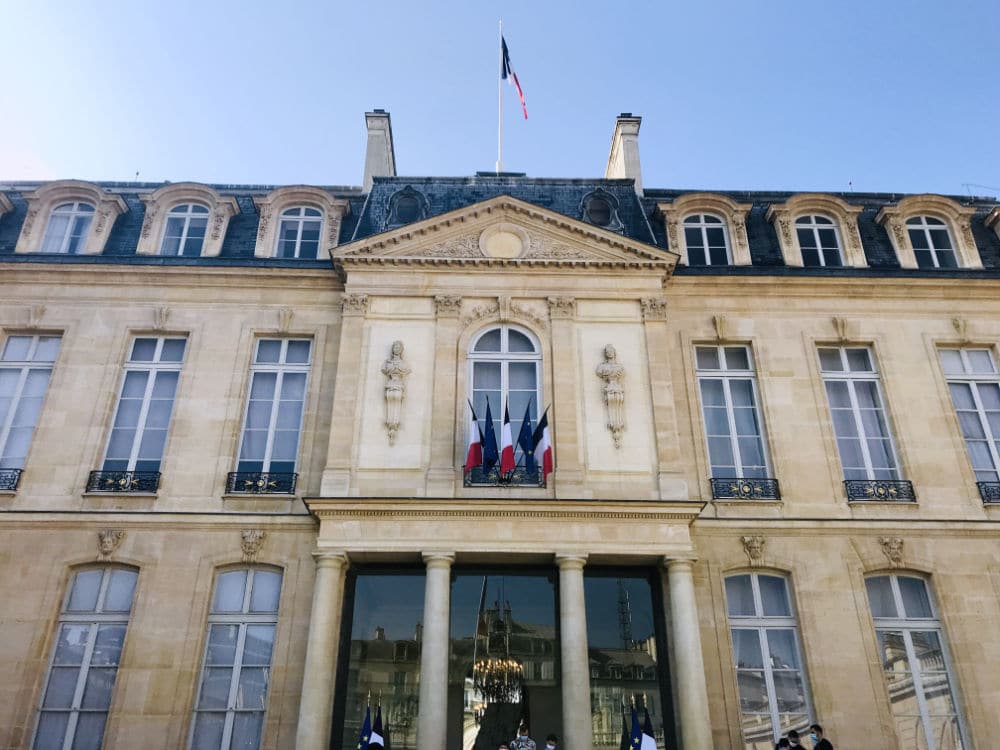
Cour d’Honneur
And finally, we get to the front of the house! From the President’s office, if you come directly down the Escalier Murat, you enter into the Cour d’honneur (courtyard of honor). The marching band playing the French National Anthem would be in this courtyard.
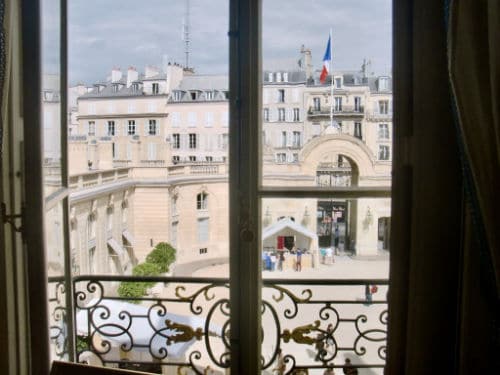
This is actually the main entrance into the Palace, where foreign dignatories enter. (The back entrance where we entered is for the hoi polloi 😉 )
The courtyard itself is not large, and usually has a little gift shop, and a few snacks for sale (not to mention toilets for the tourists). It also usually features an antique car or two.
Here is the bullet-ridden car of Charles de Gaulle, when he was shot at in 1963. The car is called a DS Presidentielle.

And just for fun, I had to point this out before we leave the Elysée:
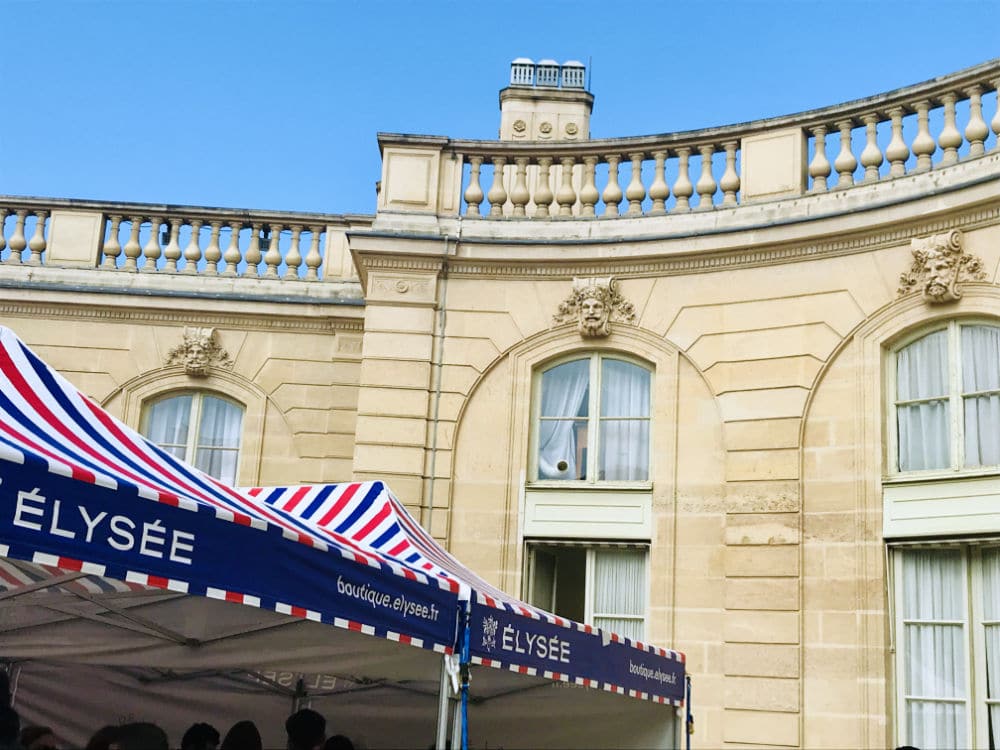
If you’ve read my article on how difficult it is to install air conditioning in France, here is proof that even the Elysée Palace struggles with this, and has decided to go with a mobile-aircon unit and the ugly vent that sticks outside. And now you know.

So whose decorating style do you prefer? Any favorite pieces? If you enjoyed this article, you may enjoy reading more about the favorite catchphrases of the Presidents of France, as well the about the former French royal family. A bientôt!
